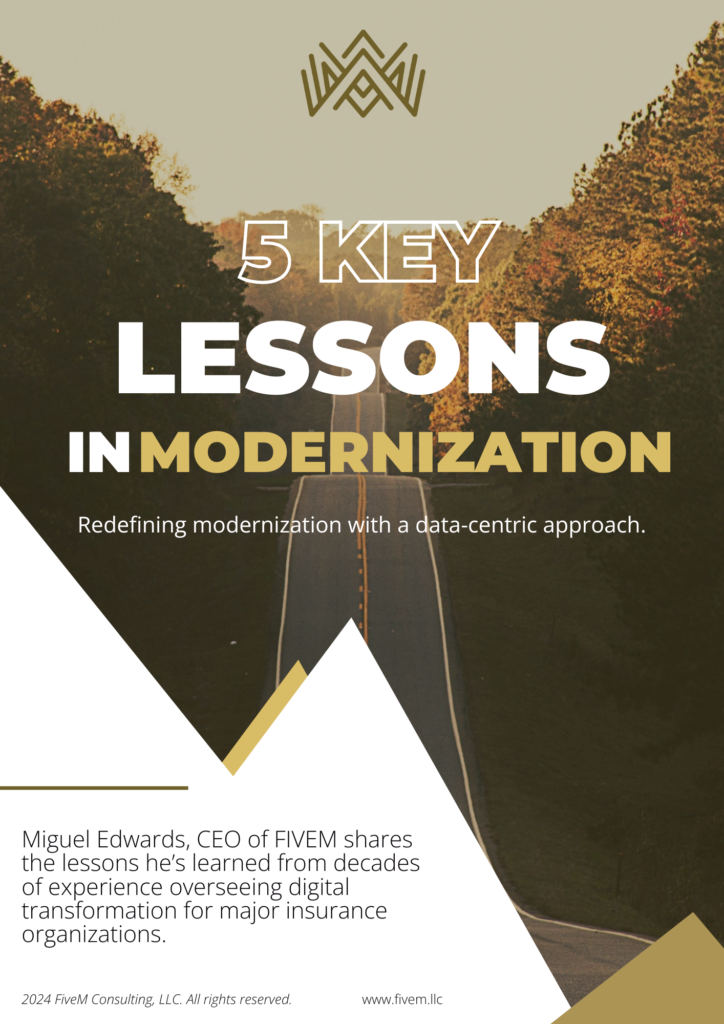Artificial intelligence (AI) is no longer just a buzzword, it’s a catalyst for innovation across industries. In the insurance world, AI is driving transformative change, from automating claims to improving underwriting accuracy. However, for Chief Information Officers (CIOs), the challenge lies in more than simply adopting AI. The real task is strategically integrating AI into operations, aligning it with business goals, and overcoming barriers like legacy systems and compliance hurdles.
This practical playbook provides CIOs with a step-by-step guide to unlock AI’s potential, streamline operations, and position their insurance organizations as leaders in a rapidly evolving industry.
1. Strategic Alignment of AI Initiatives
For any project to succeed, it must align with the company’s overall strategy. Without a clear connection to business objectives, even cutting-edge tools risk becoming expensive experiments with limited value.
- Collaborate with Leadership: Work closely with other executives to ensure initiatives support key goals like enhancing customer experience, reducing claims processing times, or optimizing underwriting accuracy.
- Define ROI Metrics: Establish measurable outcomes for projects, such as cost savings, reduced error rates, or faster customer resolutions. These metrics will not only track success but also help secure buy-in from stakeholders.
By tying AI initiatives to tangible outcomes, CIOs can ensure they add real value to the organization.
2. Addressing Operational Inefficiencies with AI
Insurance companies often deal with operational bottlenecks that slow down processes and drain resources. AI can step in to address inefficiencies and free up employees for higher-value tasks.
- Claims Automation: Deploy AI-powered tools to analyze claims, detect fraud, and accelerate payout processes. This reduces turnaround time and improves customer satisfaction.
- Underwriting Intelligence: Use machine learning models to assess risk more accurately. These tools can process vast amounts of data—both traditional and non-traditional—allowing for better-informed decisions.
- Customer Service Automation: Implement chatbots or virtual assistants to handle routine customer queries, reducing the burden on call centers.
3. Modernizing Legacy Systems for AI Compatibility
One of the biggest obstacles to adoption in insurance is legacy systems. These outdated systems were not designed to work with modern tools, but this doesn’t mean a full replacement is required.
- API Integrations: Middleware solutions can bridge the gap between legacy platforms and tools, allowing for seamless integration without overhauling the entire system.
- Phased Upgrades: Adopt a gradual approach to modernization by upgrading systems incrementally. This reduces disruptions and enables your team to adapt to changes more easily.
- Cloud Migration: Moving certain operations to the cloud can improve scalability and provide a more flexible infrastructure for adoption.
By addressing legacy system challenges, CIOs can ensure initiatives are successful without derailing day-to-day operations.
4. Building a Data-Driven Foundation
AI is only as effective as the data it relies on. Unfortunately, many insurance companies struggle with siloed or inconsistent data, which limits AI’s capabilities.
- Invest in Data Architecture: Implement a robust data management framework to unify, cleanse, and standardize data across departments.
- Ensure Data Privacy Compliance: Regulations like GDPR and HIPAA demand strict data privacy standards. Build compliance into your data management systems to avoid potential legal pitfalls.
- Leverage External Data Sources: Incorporate data from emerging sources, such as IoT devices and social media, to enrich AI models and provide deeper insights.
When data is accurate, unified, and accessible, these systems can deliver much more meaningful results.
5. Empowering Talent Through AI
This isn’t about replacing employees, it’s about enabling them to focus on high-value tasks while automating repetitive processes.
- Upskill IT and Operations Staff: Provide training programs that help your team understand and leverage tools effectively. This fosters a culture of innovation and collaboration.
- Involve End-Users in AI Projects: Engage underwriters, claims adjusters, and customer service teams in the design and implementation of AI tools. Their insights ensure solutions meet real-world needs.
- Focus on Augmentation, Not Replacement: Highlight how AI enhances employee performance rather than threatening job security. This reduces resistance to adoption and boosts morale.
6. Managing Risks and Ethical Considerations
The potential is immense, but it comes with risks—such as algorithmic bias, over-reliance on automation, and ethical concerns. CIOs must take a proactive approach to managing these risks.
- Audit Models: Regularly evaluate systems for accuracy, fairness, and transparency. This ensures they function as intended and don’t introduce unintended biases.
- Maintain Human Oversight: While automation is powerful, humans must remain in the loop for critical decisions to uphold ethical and regulatory standards.
- Develop Ethical AI Guidelines: Create a framework for ethical AI use within your organization to guide development and implementation.
By addressing these concerns early, CIOs can prevent costly missteps and maintain trust with customers and stakeholders.
7. Building a Scalable AI Roadmap
Tech adoption is a journey, not a one-time project. To future-proof your efforts, develop a roadmap that allows for scalability and adaptation.
- Start Small, Scale Fast: Begin with pilot projects in specific areas, such as claims processing or customer service. Once successful, scale these solutions across the organization.
- Monitor and Optimize: Continuously track AI performance metrics and gather feedback from users to refine and improve systems.
- Stay Agile: Be prepared to pivot and adjust your roadmap as new AI technologies emerge and market demands shift.
A well-thought-out roadmap ensures AI initiatives remain relevant and impactful over time.
8. Partnering for Success
CIOs don’t have to navigate AI adoption alone. Collaboration with external partners can accelerate success.
- Collaborate with Technology Providers: Work with vendors and insurtech startups to access cutting-edge AI solutions and expertise.
- Join Thought Leadership Communities: Participate in CIO forums and industry networks to share best practices and gain insights from peers.
- Foster Strategic Alliances: Partner with universities, research institutions, or consulting firms to stay ahead of AI advancements.
The right partnerships can provide both technical knowledge and strategic guidance to make AI adoption smoother.
Final Takeaway
Artificial intelligence offers insurers unprecedented opportunities to enhance efficiency, improve customer experiences, and gain a competitive edge. For CIOs, the key is to approach AI adoption strategically—aligning initiatives with business goals, addressing inefficiencies, modernizing systems, and managing risks responsibly.
With a clear roadmap and the right partnerships, AI can transform insurance operations, positioning your organization as a leader in the industry’s digital evolution.
Ready to take the next step? Let’s collaborate to craft your AI-driven strategy and revolutionize your business today.





